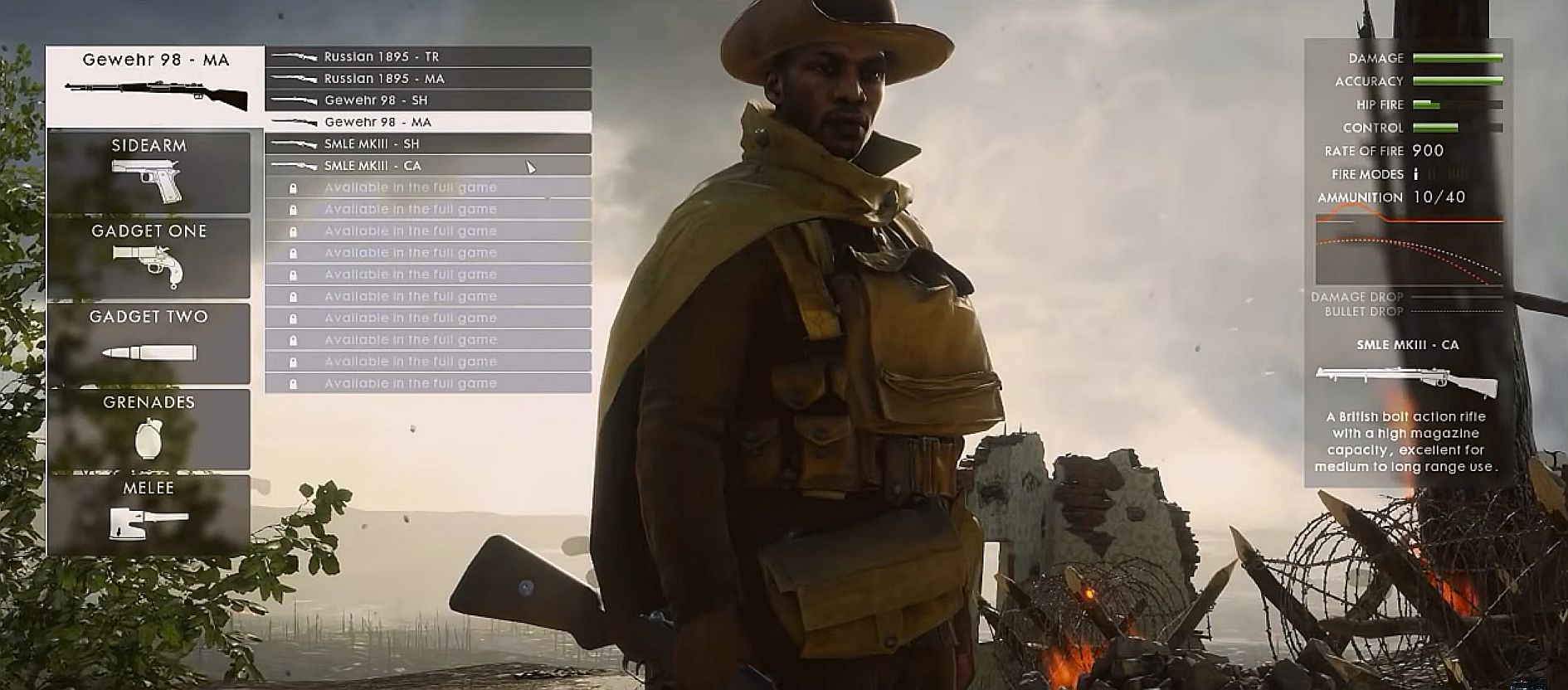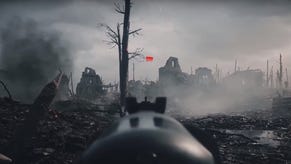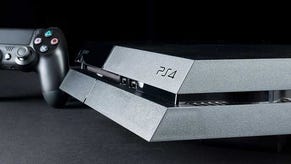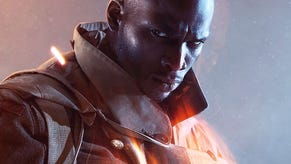Battlefield 1 Scout Class guide – weapons, load-outs, flare guns, armor-piercing rounds and more
Snipers, the bane of many an existence.
Thanks to its World War 1 setting, Battlefield 1 has a serious chance to change some things up in its multiplayer, and developers DICE seem to have seized the opportunity. While the broad strokes of the classes in Battlefield 1 might seem familiar to most shooters, there's a fair bit that's different about them.
Before you jump into the trenches, allow us to assist by guiding you through what, exactly, you can expect from each of the game's core classes. Some are similar, and some are less familiar. Here's everything you need to know about the Scout class.
Remember that for even more help with Battlefield 1 you can hit up our definitive guide hub page, which has just about everything you need to know in one place.
Battlefield 1 Classes: Scout Guide
The Scout might also be familiar to some under the name Recon, and others might refer to it by a much more reductive but no less accurate name - the sniper. The scout is designed to be at his best when blasting fools away from afar without them even realizing they're being watched. You'll want to hang back far away from the front lines since your close-quarters weaponry isn't anywhere near as effective, but you'll also need to be calm and not go dashing off if you can't find enemies in your sights. Playing Scout is all about remaining calm. When you're not actively sniping, you can use your scope to call out enemy locations and positions to allies. In many senses, the Scout is one of the most difficult classes to play well.
Scout Class Weapons
The Scout gets access to bolt and lever-action rifles that unlike those used by the Medic are full-on, full-range sniper rifles. As a result the Scout can engage with the enemy at a far further range than other classes and at the optimum, maximum range is pretty much unbeatable. These rifles are devastatingly powerful - all you need to do is line up the perfect shot. There's multiple variants of many of the rifles that offer slightly different configurations on the same gun with a slightly different utility as a result, but the core concept is the same: long-range, slow to reload, devastating.
A key point to understand with the scout is the concept of bullet drop and bullet travel time. If a foe is far away you may need to aim above them to hit them, since the bullet will drop as it travels a long distance. This is a real skill, especially doing so in a timely fashion. If you fire a volley of shots your position is more likely to be uncovered, so you really want to aim for that one shot-one kill moment.
To make up for the lack of any weapon that's useful beyond long-range as their primary weapon, the Scout class gets access to a range of short to medium-range effective pistols. All of these weapons do fairly average damage and work decently at a fairly average range, and are vital if your scout position is encroached upon by an enemy at close-range.
Scout Class Gadgets & Gear
One of the major differentiators for any class in Battlefield 1 is in its secondary gadgets and gear. The Scout class is really more focused around its unique weapons than most other classes, but it does still get some unique and class-defining gadgets that are focused on helping out your team as a whole. They get access to the flare gun in a couple of different formatsm, the tripwire bomb and special armor-piercing ammo for their sniper rifles.
The Flare Gun is exactly what you'd expect. We've all seen these before, and there's nothing particularly out of the ordinary about Battlefield 1's interpretation of the weapon. The Scout gets access to two types of flares - Spot Flares and Flash Flares. The former will reveal enemy locations near the flare on radar, while the latter performs like a flashbang grenade except you fire it at people rather than throw it. Players that get too close to a burning flare will take damage from its heat, so keep that in mind as a useful way to deal a little extra damage.
K Bullets are essentially special armor-piercing rounds that are exclusive to the Scout. These can be manually loaded into your sniper rifle and fired, but you only get 5 of these bad boys per life, so use them sparingly. These rounds aren't just effective against infantry but are actually best used against bigger, harder targets. A heavily-armored Elite Class player should be targeted with these, for instance. In a tough situation you can also use them against vehicles - just aim for the engine to try to take it out.
The Sniper Decoy is an especially handy gadget for those who want to play the scout like a true untraceable sniper - it's a dummy that can be placed out and resembles a sniper and will register to the enemy likewise. Enemies who fire on it will have their location revealed to you.
The Sniper Shield is exactly what you'd expect, a portable shield that can be deployed with a little hole it in for you to snipe through. This'll only protect you while you're prone, so beware.
The Trench Periscope will be less useful on many maps, but on those that are trench driven it's extremely useful. It's pretty self-explanatory - a periscope you can pull out to look over cover safely. You can mark enemies while using this thing too.
The Tripwire Bomb is the offensive gadget option for the Scout but is ultimately still a reactionary force. Think of it as being like a smaller version of the anti-tank mine assault has access to, or in modern warfare terms more like a claymore. You'll spawn with two. This isn't going to be much use against vehicles that have any armor but is incredibly useful for taking out infantry. Place these hidden near doorways to leave a nasty surprise! These come in 3 variants: Gas, High Explosive and Incendiary. These three do exactly what you'd expect, releasing gas, a massive explosion or fire.










